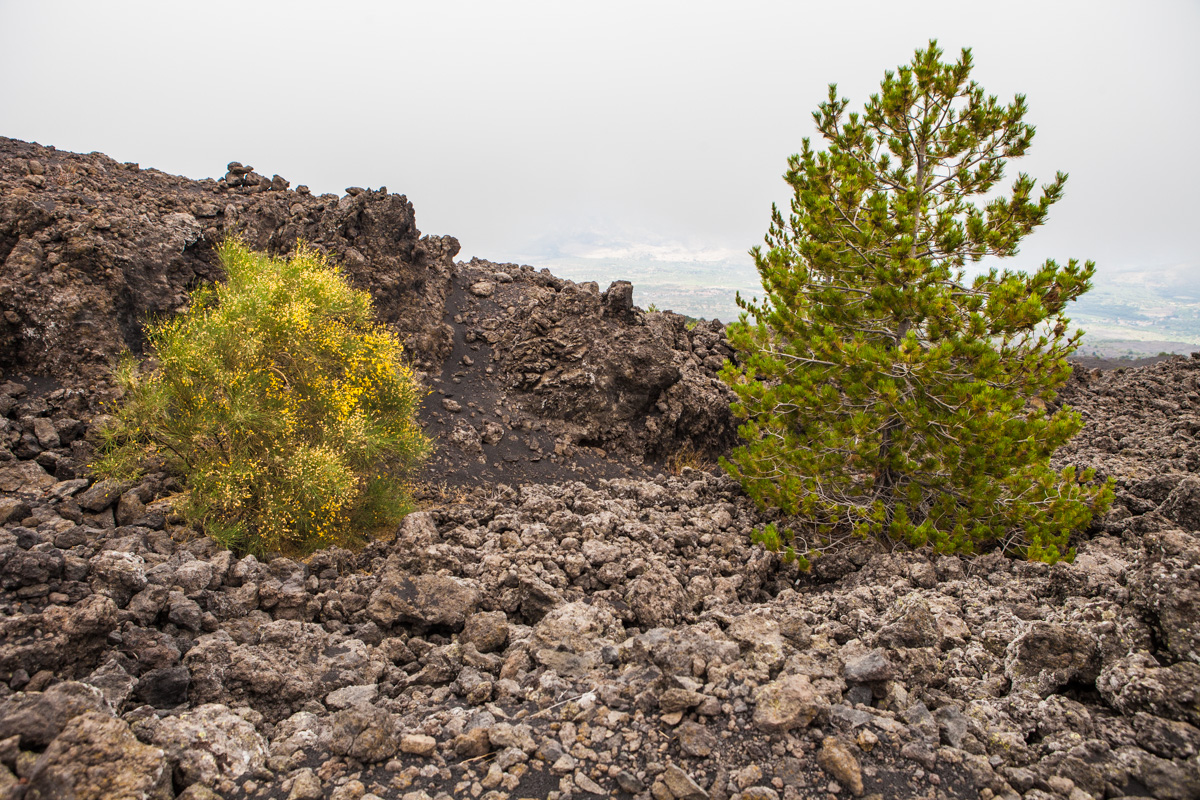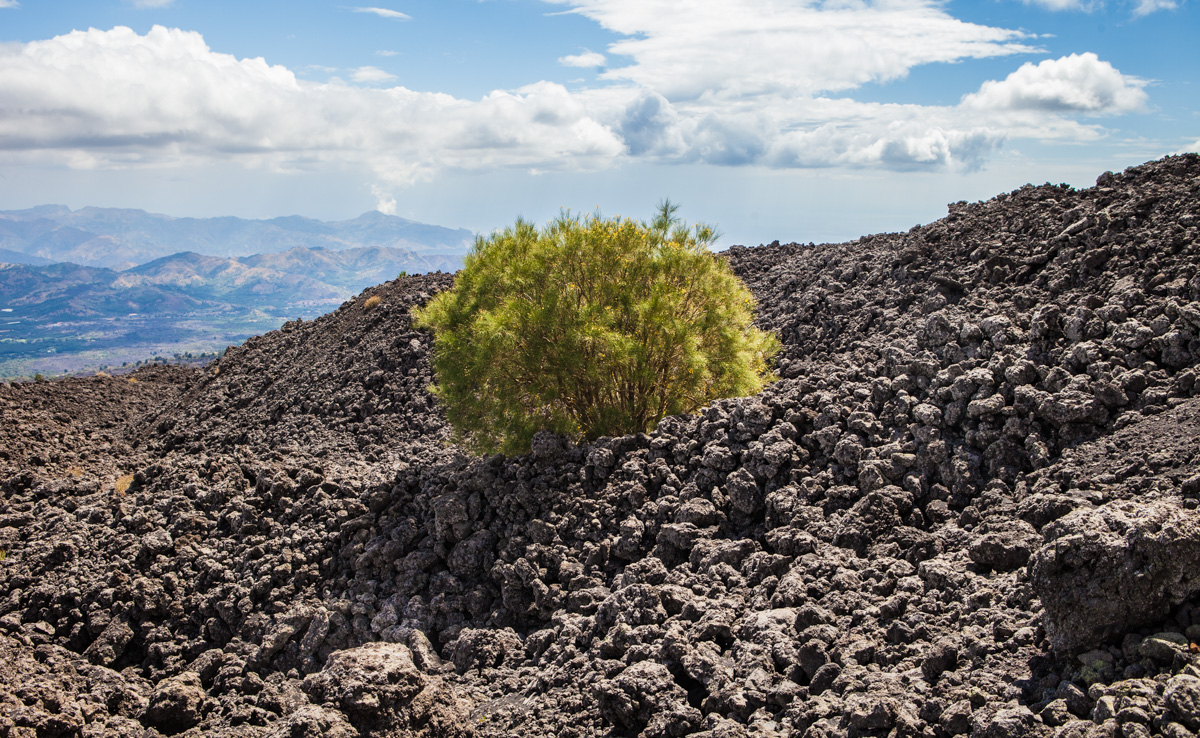What Grows in Lava
Driving along the MareNeve road from Linguaglossa, the sweltering July air begins to cool as we climb higher up the slopes of Mount Etna. We turn down a narrow dirt road to park and begin our hike through the 1911 and 1923 lava flows.
This rocky, lunar landscape feels like another world. Only a few plants and trees dot the dark expanse of black and grey lava formations with life. Despite the destruction Mount Etna’s eruptions cause, it’s this molten lava that over time…a very, very long time…help create some of the richest agricultural land on earth. But how does this barren landscape transform into lush forests and vineyards? I’m no volcanology or soil science expert, but the more I learn from friends who work on Mount Etna, the more fascinated I become.
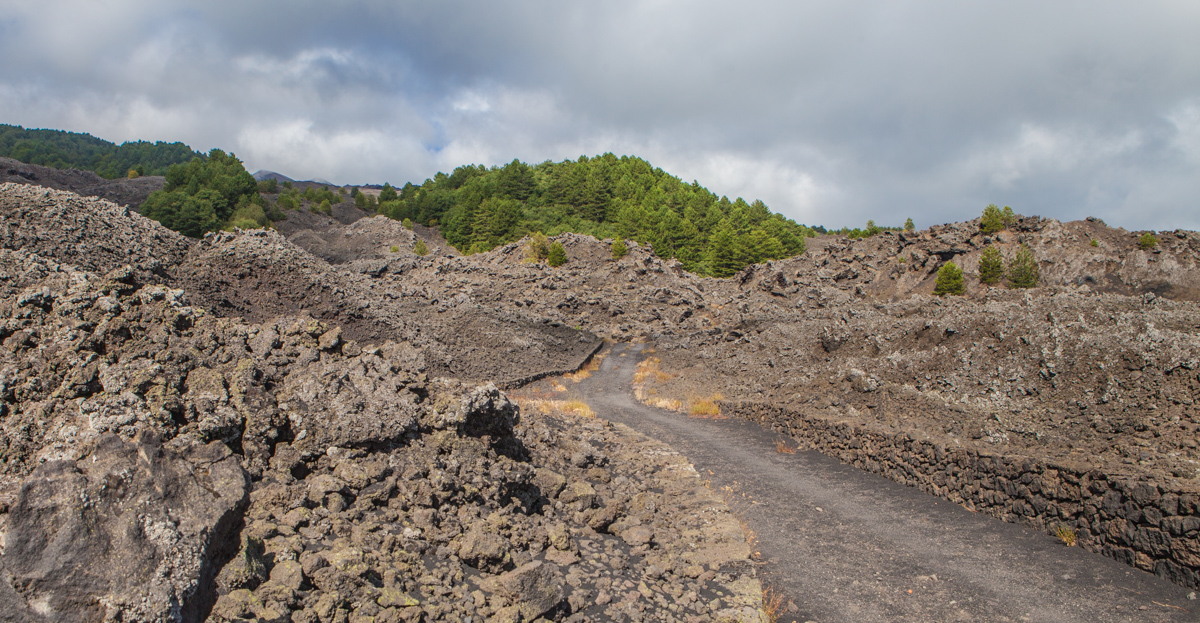
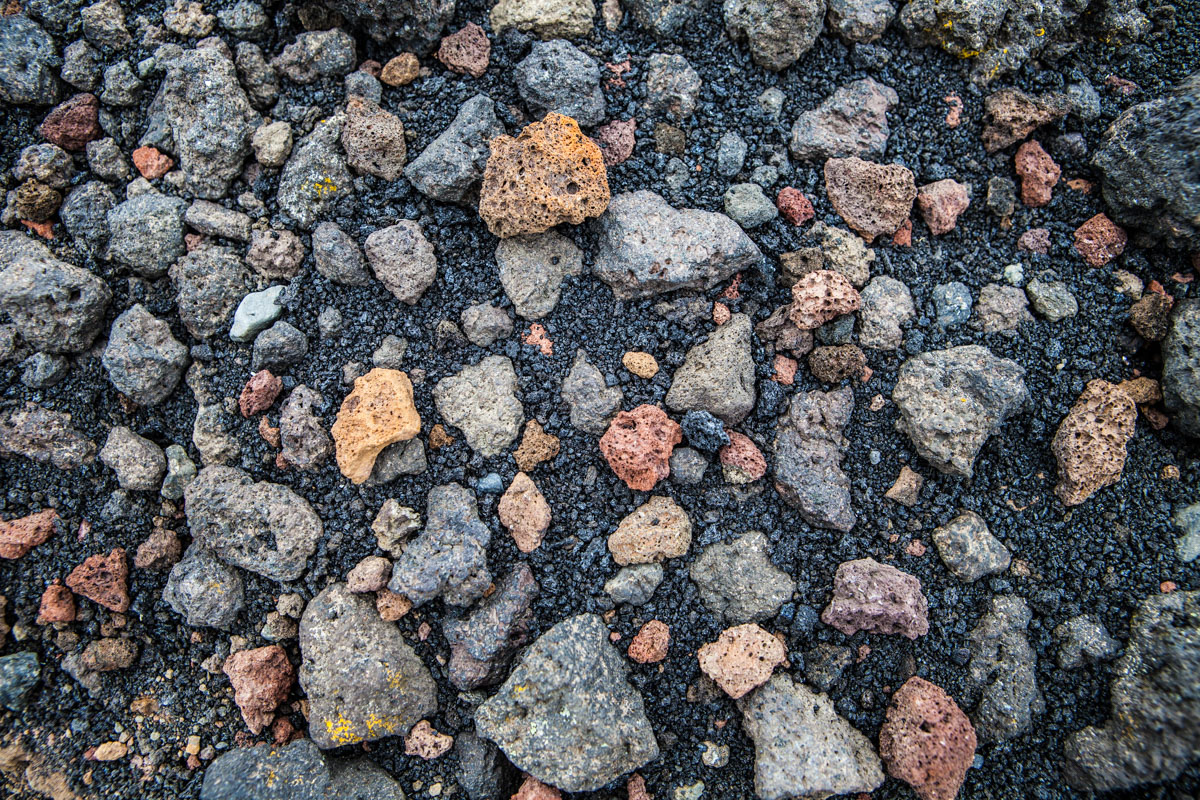
First we walk through the 1911 flow which sent a massive lava stream 2,000 feet wide and four feet deep all the way down to the villages of Linguaglossa and Randazzo. Black lava stone and sand cover the trail, but also red pumice and a variety of other colors depending on the mineral composition of the rocks. With each eruption Mount Etna spews out different combinations of minerals. We look closer at the lava and see many kinds of lichen and moss growing on it. It’s these first organisms that begin the process (along with rain, wind and snow) of breaking the lava down to it’s mineral components. The lichen slowly eat away at the rock’s surface and as they decompose provide nutrients for other forms of plant life.
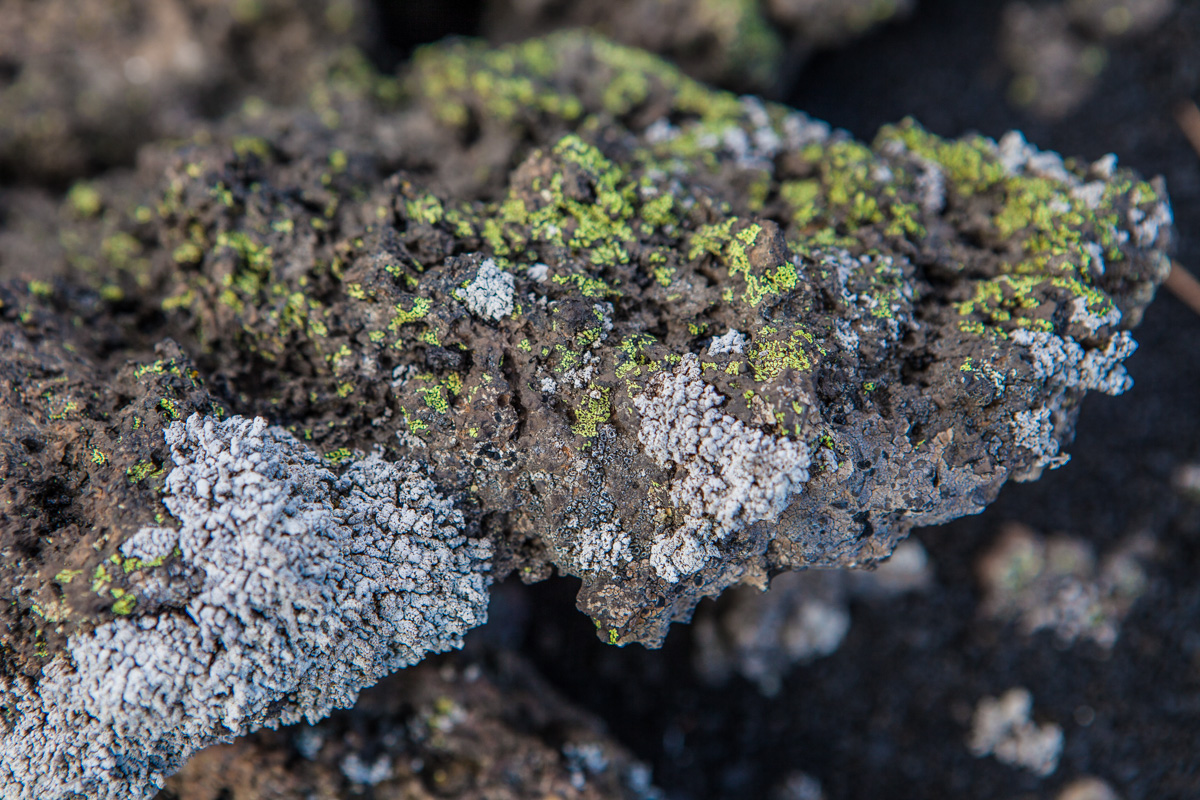

Moving towards Castiglione we walk next through the 1923 lava flow, another major eruption that wiped out roads all the way to Randazzo. After lichen and moss the pine trees begin growing through little cracks in the rocks. With no real soil in sight, the pines seem to be literally growing straight out of stone.

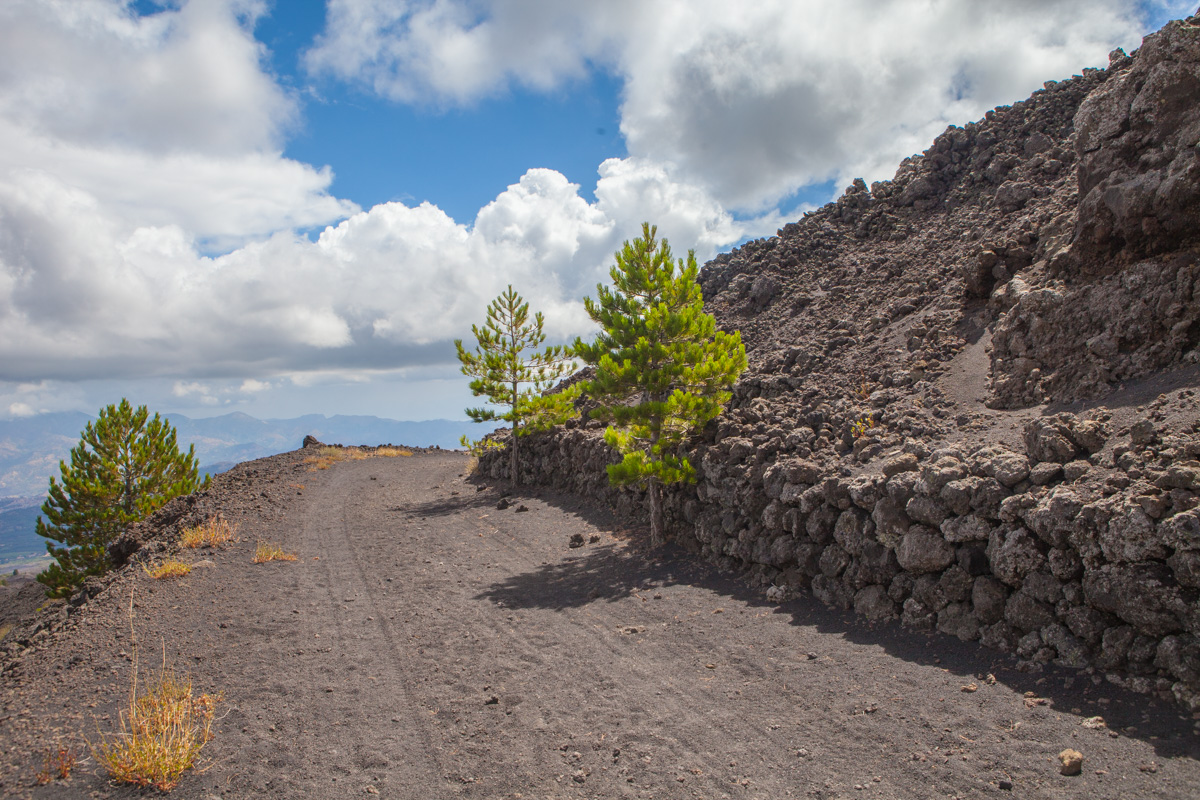
Next the colorful ginestra trees take hold. Other types of ginestra (also called broom or scotch broom) grow more like bushes, but Etna ginestra can grow ten meters high. Covered in bright yellow flowers, it’s blossoms give off a strong honey aroma. I’ve always loved the expression “Bloom where you’re planted”, and ginestra is a beautiful example of what can flower even in this harsh landscape.

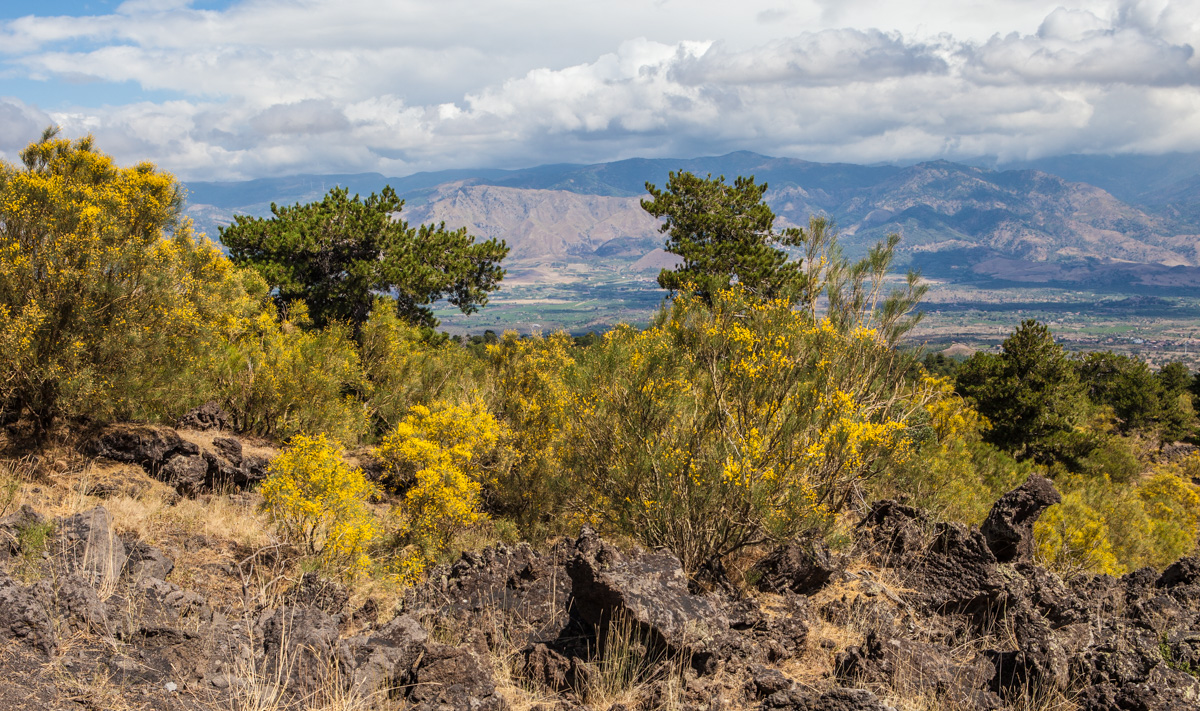
As the roots of pines and ginestra crawl down through cracks in the lava, they create openings for water to enter and eventually for other plants to grow. Mount Etna is over 2.6 million years old and some of it’s first eruptions were five hundred thousand years ago. It could take hundreds of years before this area we walk along becomes a forest and many more before it might eventually be farmable land; but lichen, pine and ginestra are the beginning of it’s transformation.
Ralph Waldo Emerson said it best; “Adopt the pace of nature. Her secret is patience.”

